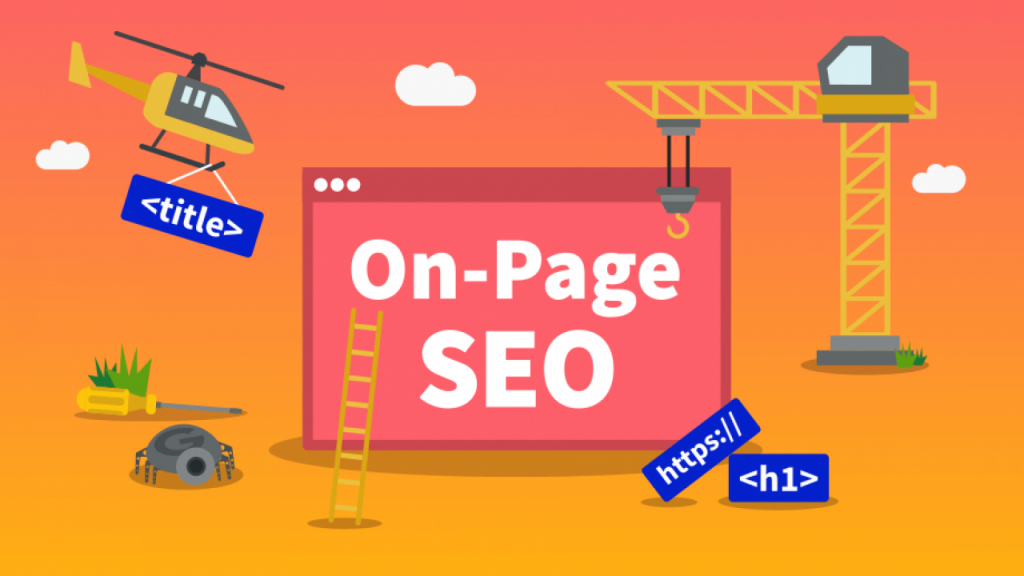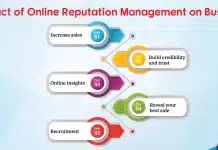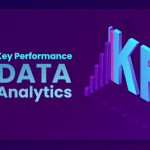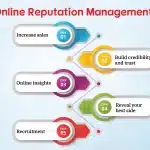The most important part of increasing your site’s search traffic is on-page SEO. Google has released several algorithm updates in the last few years.
SEO experts worldwide have had to adapt their on-page SEO strategies to reclaim their former search engine rankings.
This article will show you the most effective SEO techniques that will help you improve your search rankings, increase traffic, and enhance the user experience on your website.
Let’s start with the basics first
What is on-page SEO?
An on-page SEO strategy refers to optimizing a website’s structure and content (as opposed to off-page SEO).
Off-page SEO is all about link building; on-page SEO focuses on these two aspects: page optimization and content optimization.
On-page SEO: What are the best practices?
An in-depth understanding of on-page SEO is required since it encompasses a wide range of topics. You may find step-by-step instructions on achieving on-page success in this tutorial.
On-page SEO is important because of the following reasons:
So that it may help you get better ranks, reach a larger audience and increase organic traffic as an essential aspect of SEO.
In contrast to off-page SEO, on-page SEO is completely in your hands. If you want your website to rank organically, you can reach out to an Australian SEO company.
WHEN should you start working on your On-page SEO strategy?
Some elements need to be set up once the website is first launched (such as the page structure, HTTPS, and website performance optimization). In contrast, others need to be done more frequently, such as when you publish a new blog post and consider on-page optimization.
Because SEO is a never-ending process, even if you are at the top of the search results, you should continue to execute on-page SEO.
On-page SEO should be handled by whom?
SEO experts, bloggers/web admins/online marketeers in general, or anybody who runs a website. Anyone attempting to get a website to rank higher in search engine results.
In what ways does on-page SEO matter?
There are a plethora of processes involved in effective on-page SEO.
SEO elements that directly or indirectly affect the success of your website are listed below.
- A website that can be crawled and indexed by search robots is crawlable.
- Structure and logic are evident in the pages’ architecture, which is consistent across the site.
- High-quality external links– the website links to high-quality resources outside the domain.
- Site loading speed — all devices may access the site fast.
- The page’s ability to be seen on various devices and browsers is known as mobile-friendliness.
- An SSL certificate and HTTPS encryption ensure the website’s safety.
- URL addresses that are simple and user-friendly
- Good content — the page addresses a certain search intent.
- When a web page is optimized for search engines, it includes relevant keywords in strategic locations.
- Image optimization is the process of making photos more visible in search results.
- The material has been adjusted for readability and usability.
Things like HTTPS and page speed have been shown to affect search engine rankings. This implies that Google directly incorporates them into their algorithm for determining rankings.
A few are utilized directly by Google, while the most are not.
Ranking factors like clickthrough rate (CTR) and outbound links are hotly debated among SEOs. In this forum, we’re not going to go into it.
What’s crucial is that whether or not Google utilizes these elements as a ranking factor, improving the overall user experience and providing value for website visitors are both vital.
Note: There are hundreds of ranking signals, but no one understands exactly what they mean or how they all work together to determine rankings. As a precaution, Google employees are very tight-lipped about their formula. There are just a few components of their algorithm that they have publicly stated or confirmed.
In other words, high-ranking websites often have excellent on-page SEO.
Get Your Keyword in the First Line of the Title Tag
Your SEO approach may be suffering because you’re not using appropriate title tags. SEO professionals feel that the title tag is the most significant SEO element, with 36% saying so.
You may already know that your title tag should incorporate your keyword. However, don’t forget to include your keyword in the title tag at the top. The title tag should begin with your keyword.
Make Use of Your Keywords in Your Content First 150 Words of the Text
The first 100-150 words of your page are crucial to Google. As a result, be sure to use your keyword at least once in this section. Use keyword-rich anchor text in your internal links.
Link to External Sites
Check to see whether you have at least 5-8 links to reputable websites in your content (e.g., Wikipedia). This action informs Google that your material is reliable and well-referenced.
As the last step, optimize your images.
You must optimize image filenames and alt tags to help Google comprehend pictures in your content better.
What is the best method for doing this? Use a filename that describes the picture in a sentence or two. “spinach omelete.png” is an appropriate name for a picture of a spinach omelet.
You should also include a descriptive alt tag like “spinach omelet decorated on a dish” when uploading the photograph to your website.
Your photographs may help you rank higher in image searches if they are optimized.
Create and Publish Longer-Form Content
Long-form material may be defined in a variety of ways. For example, many believe that long-form articles exceed 2,000 words, while others believe that articles with 700 words or more qualify. However, marketers generally agree that blogs of 2,000 words or more are considered long-form content.
These long-form content rules the roost when it comes to search engine results pages (SERPs).
According to SEO specialists, longer articles tend to perform better in search engine results.
2,000-2,500 words of articles now dominate the search engine results page (SERPs).
The days of the 300-500 word blog post are long gone. Long-form content is better for SEO since it has a longer shelf life.
Ensure that your headlines are enticing
It’s not pretty. Irrespective of how thorough or well-researched you may be, people will ignore your blog. You won’t get your message through if you don’t have a great title accompanying it.
As a result, you need to put some work into creating headlines that catch the interest of your readers and make them want to read on.
The research indicated that emotional titles were 7 percent more likely than non-emotional headlines to get clicks from Backlinko’s CTR (clickthrough rate).
Make use of powerful phrases in your headlines to trigger an emotional response. For example,
A free tool such as CoSchedule’s Headline Analyzer will help you assess the quality of your headline if you’re having trouble coming up with the right one.
Title Analyzer evaluates your headline for readability, grammar, and general structure and then assigns you a headline score. In addition, it will provide you with suggestions on how to make your title perform better in search engine results pages (SERPs).
Upgrade Your Meta Titles
As a result, meta descriptions are typically neglected since they directly influence search engine results. That may be the case. However, meta descriptions may impact your search engine results by increasing the clickthrough rate (CTR).
According to Backlinko CTR research, sites with meta descriptions get 5.8% more clicks than ones without one.
Creating distinct meta descriptions for your articles, homepages, product pages, and categories is a recommended SEO best practice.
Take Action to Speed Up Your Website
Improve your page speed if you want your website visitors to enjoy a smooth experience. Google uses page speed as one of the factors it considers when ranking websites. As a result, tools like Google PageSpeed Insights and GTMetrix are essential for tracking your page’s performance in real-time.
You may speed up your website by following these tips:
- The browser should be able to store data in the form of cookies.
- Reduce the size of HTML, CSS, and JavaScript files.
- Reduce the time it takes for a server to respond Reduce the number of redirects









